In today’s article, I’ll talk about 11 incredible Amazon Rainforest monkeys that you need to know!
Amazon Rainforest monkeys
As an essential part of the forest ecosystem, these species of primates are among the most influential animals in the Amazon Rainforest.
While some of these species of monkeys can be found in both Central and South America, for the purposes of this article, I’ll focus on their habits in the South American rainforest.
Without further ado, let’s get to these furry animals!
1. Black-capped capuchin monkey
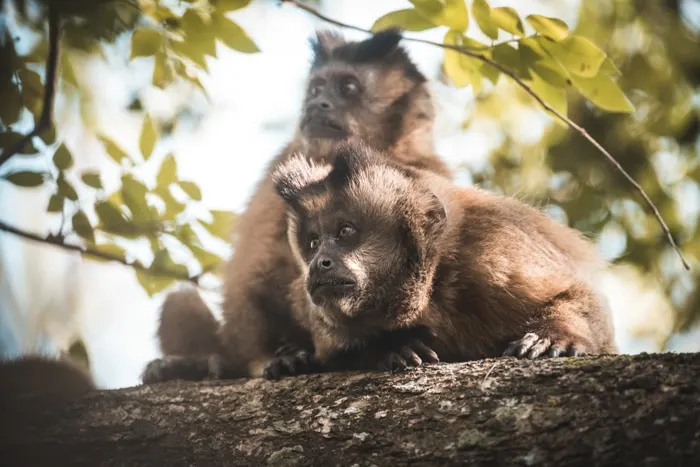
The tufted capuchin is named after friars dressed in brown robes with hoods covering their heads. These animals are curious and tend to play with anything they find.
This little Amazon mammal has brownish-gray fur, and its belly is a little lighter colored. Beyond that, its thick tail is as long as its body or sometimes slightly longer.
The tufted capuchin diet relies heavily upon eggs, insects, pith, small mammals, birds, squirrels, small reptiles, nuts, and nectar. In addition to other small mammals, tufted capuchins are a confirmed predator of the titi monkey.
2. Black howler monkey
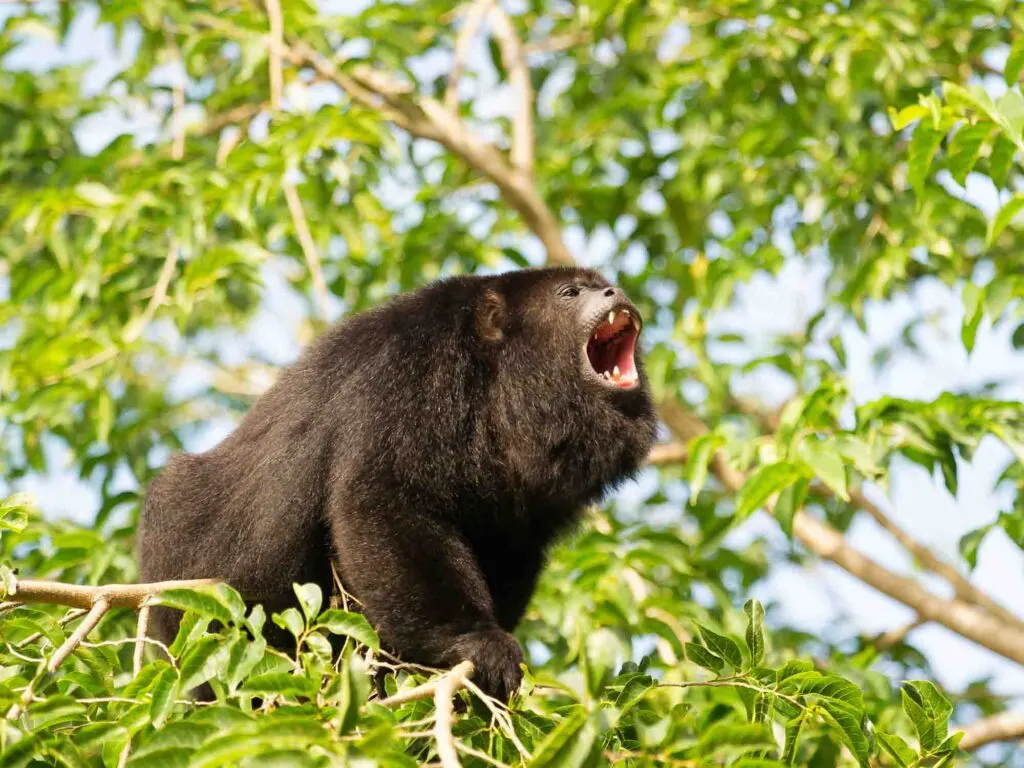
The black Howler is the largest among the Amazon Rainforest monkeys. It has a distinctive neck and a lower jaw having huge vocal cords. This primate also has a prehensile tail used for hanging and gripping on tree branches.
As the name says, this monkey is loud. In fact, it is the loudest animal in the Amazon, with its howl reaching 130 dB. (For reference, an airplane taking off is 140dB).
Males are relatively larger compared to females, who are also buff in color. Black howlers are diurnal social animals who stay in groups of 5 to 19, composed of 1 to 3 mature males and 2 to 4 mature females with their young ones.
This primate is folivorous, and its diet mainly comprises leaves, soft fruits, flowers, and buds.
Amazon facts: The Amazon Rainforest is the most biodiverse place on earth.
3. Red-faced spider monkey
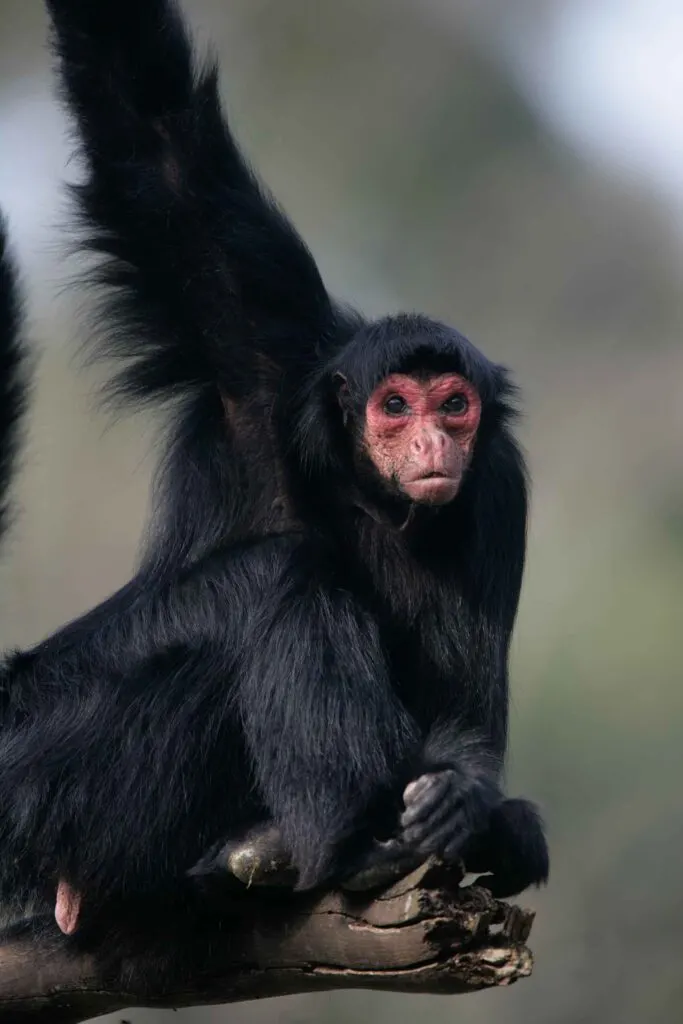
This monkey species has long black hair and a red or pink bare face with a few short white hairs. On the other hand, their infants are born with dark faces, which lightens as they grow older.
The red-faced spider is one of those Jungle monkeys with a prehensile tail, long fingers, and limbs that are ideal for climb trees.
It’s also arboreal and typically lives in the upper layers of trees. The red-faced spider stays in groups of up to 30 primates, precisely during the night, and the number gets smaller at dawn. It primarily feeds on fruits, young leaves, seeds, roots, flowers, and tiny insects.
Unfortunately, its primate cousin, the white-bellied white monkey, is on the list of endangered animals in the Amazon Rainforest.
4. Bald uakari monkey
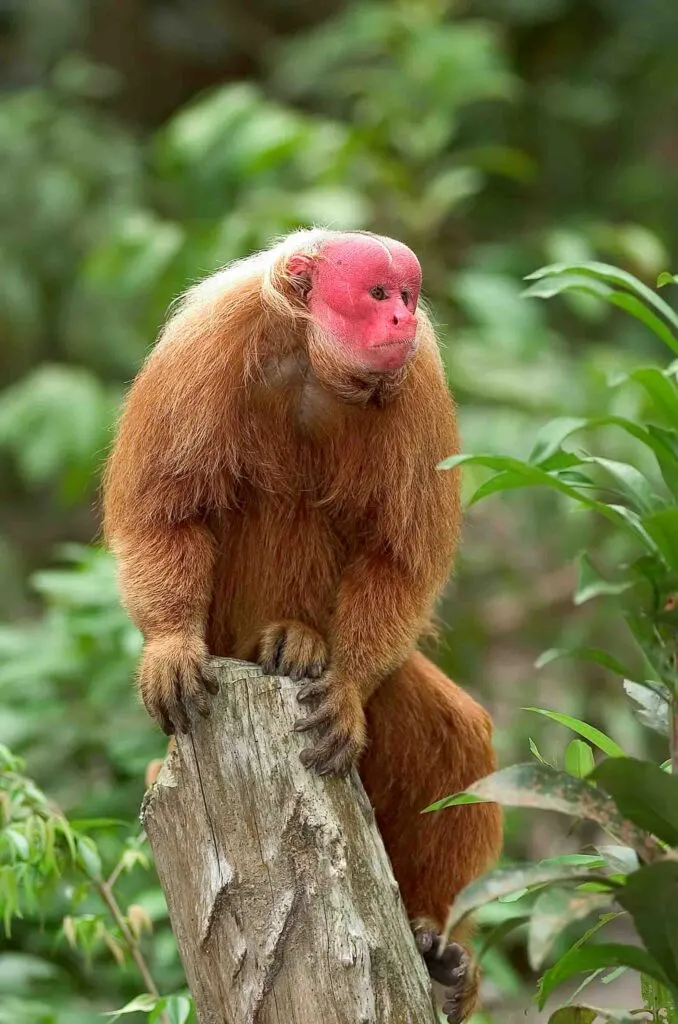
The bald Uakari has a rather distinctive appearance among most Amazon Rainforest monkeys. It has a broad flat face that’s red with an extremely short tail.
Its unique facial color is said to be a result of the wide infection of malaria. Bald uakari with bright red faces is considered healthy, unlike their counterparts having paler faces.
These primates are highly social and among the monkeys in Brazil that usually stay in groups of between 10 to 30, and at times in units of up to 100.
The bald uakari are herbivores, and their diet mainly consists of fruits, nectar, leaves, and caterpillars.
5. Common squirrel monkey
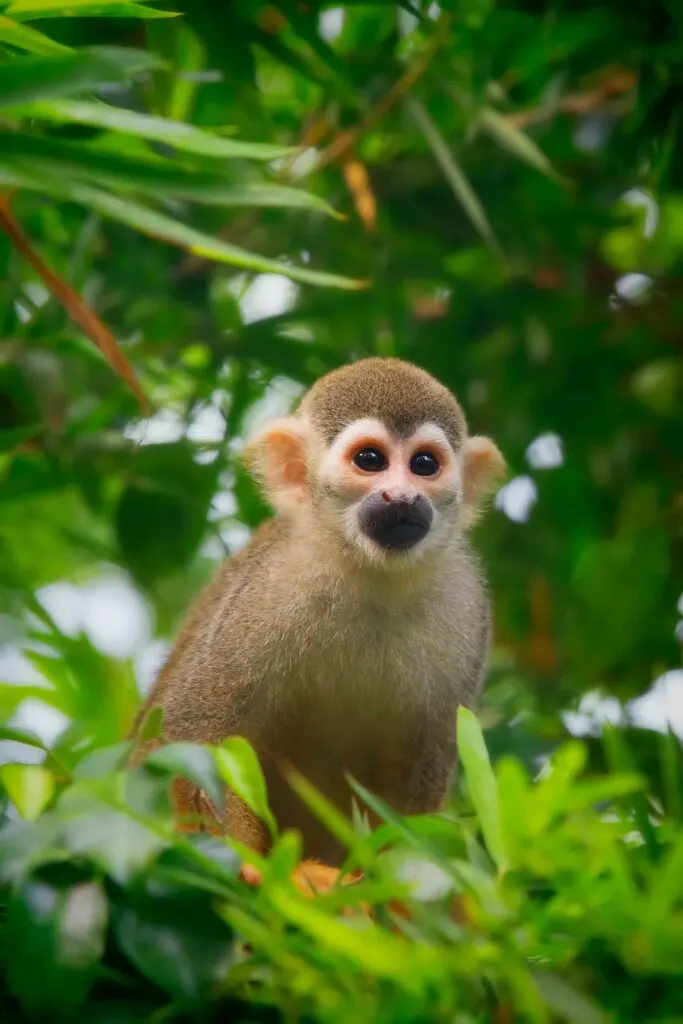
Known to have an enormous brain relative to body mass among all the Amazon Rainforest monkeys, the common squirrel monkey has a 12.5-inch-long body.
It has a non-prehensile tail that’s approximately 16 inches. Their bodies are slender, having bright yellow legs and a short greyish coat.
This monkey breed lives in groups of 300, although they are further divided into 40 to 50 subgroups. Social hierarchy is usually not pronounced, although males are more dominant than females in most groups.
The common squirrel monkey is an omnivorous animal, and its diet comprises fruits, nectar, flowers, and a variety of insects.
6. Pygmy marmoset
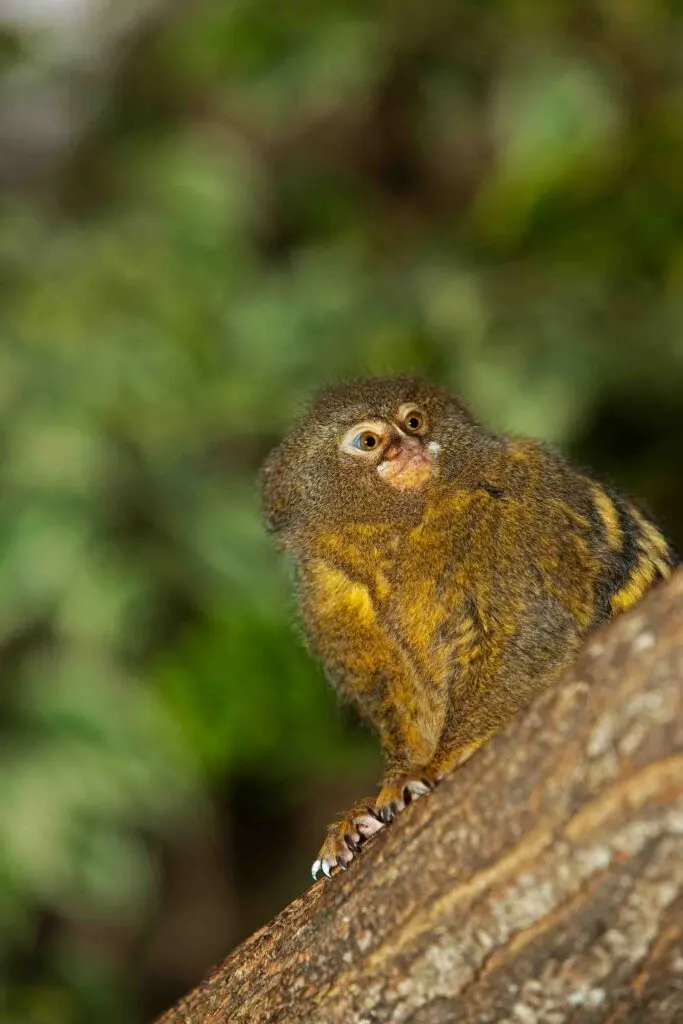
The pygmy marmoset is the smallest among the Amazon Rainforest monkeys, with an adult monkey fitting well when placed on a man’s hand.
This dwarf monkey has brown fur and a squirrel-like non-prehensile tail longer than its body. The pygmy marmoset typically has the same weight as A butter stick.
This primate is among the few monkeys in the rainforest, usually active during cooler mornings and late in the afternoon.
Highly social, the pygmy marmoset stays in groups of 2 to 15, typically comprising a breeding pair with their offspring. Their primary food is tree sap; however, their diet also includes fruits, insects, leaves, and nectar.
7. White-faced saki
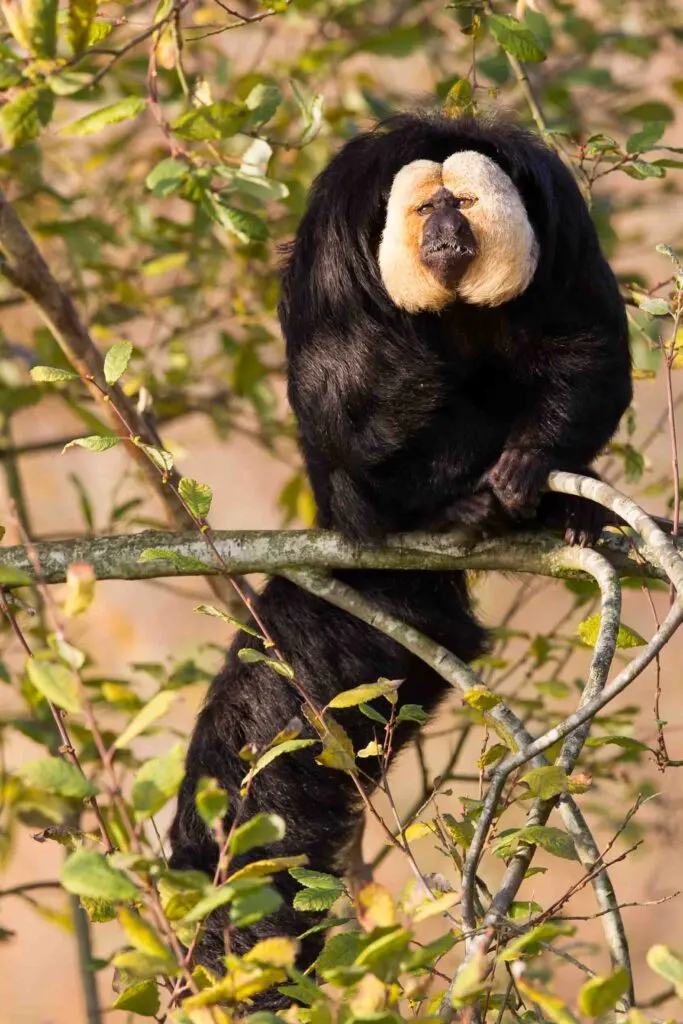
A white-faced saki has a small body having a heavy long non-prehensile furred tail. Its robust body and strong leg muscles enable it to jump exemplarily.
Males have a buff furry face and a distinct black overall coloration. In contrast, females have a considerably lighter coat with bright patches stretching from each eye towards the chin.
White-faced saki usually stays in small units of 2 to 4 and are generally among the few Amazon Rainforest monkeys active, especially in the morning and early in the afternoon.
This monkey breed diet mainly comprises fruits; however, they usually feed on flowers, leaves, seeds, and insects.
8. Red-handed tamarin
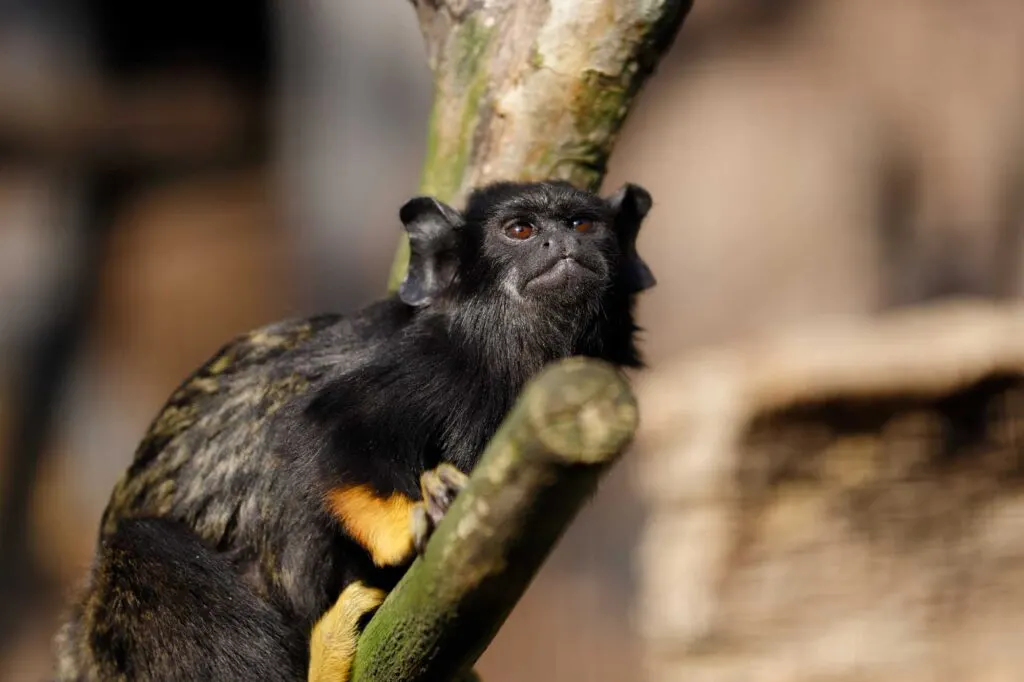
Just like the name suggests, this particular primate has reddish-orange hair on both its hands and feet. It has a face and overall hairy body that’s black.
A red-handed tamarin is a quadruped, and it usually has claws on all its digits except on its big toes. This monkey species lives in groups of 4 to 15, traditionally led by an older female.
Among the Amazon Rainforest monkeys that are highly territorial and quite aggressive, this breed has sharp canines and claws that they use when provoked.
Lastly, the red-handed tamarin is omnivorous with a diet that includes flowers, nectar, fruit, insects, spiders, frogs, and lizards.
9. Emperor tamarin monkey
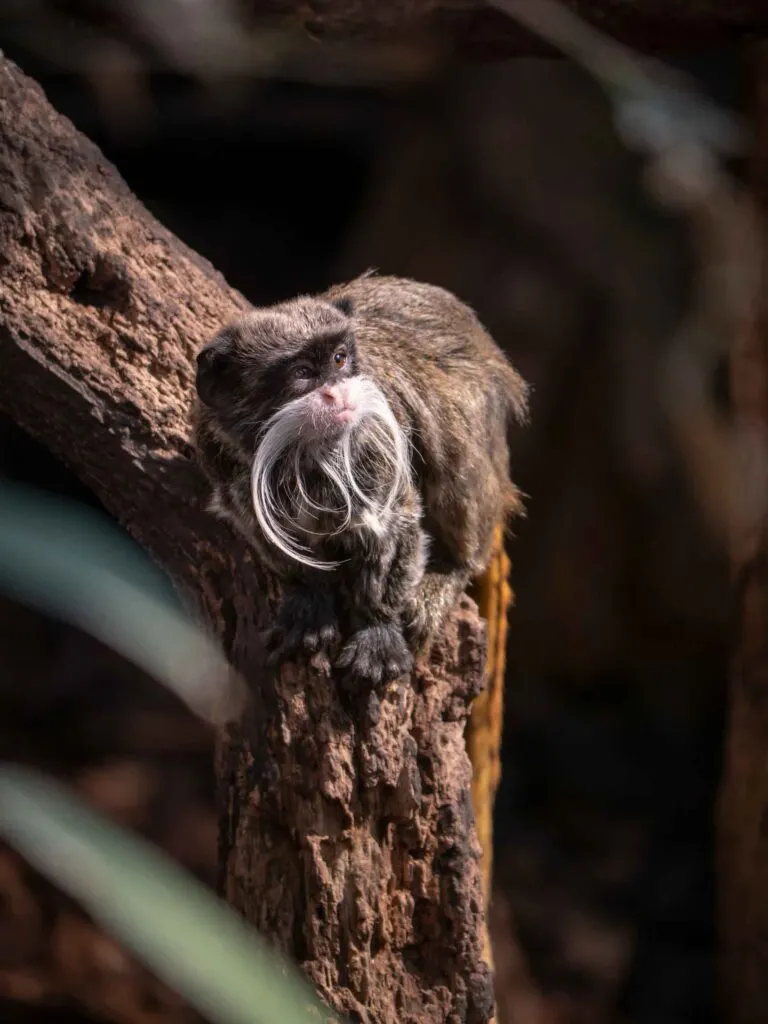
This monkey species has a unique long white mustache similar to that of German emperor Wilhelm II, hence the name emperor tamarin monkey.
This species is among the colorful Amazon Rainforest monkeys, with a fine silky grey fur with dull gold or reddish-orange tail.
Its under part is white, having a silvery brown or blackhead crown, with both genders having a similar appearance.
The emperor tamarin monkey is diurnal and highly social. They stay in groups of 2 to 8 and at times a maximum of 15 primates.
This primate species basically feeds on fruits, sap, flower, nectar, snails, frogs, insects, and occasionally on small birds.
10. Brown woolly monkey
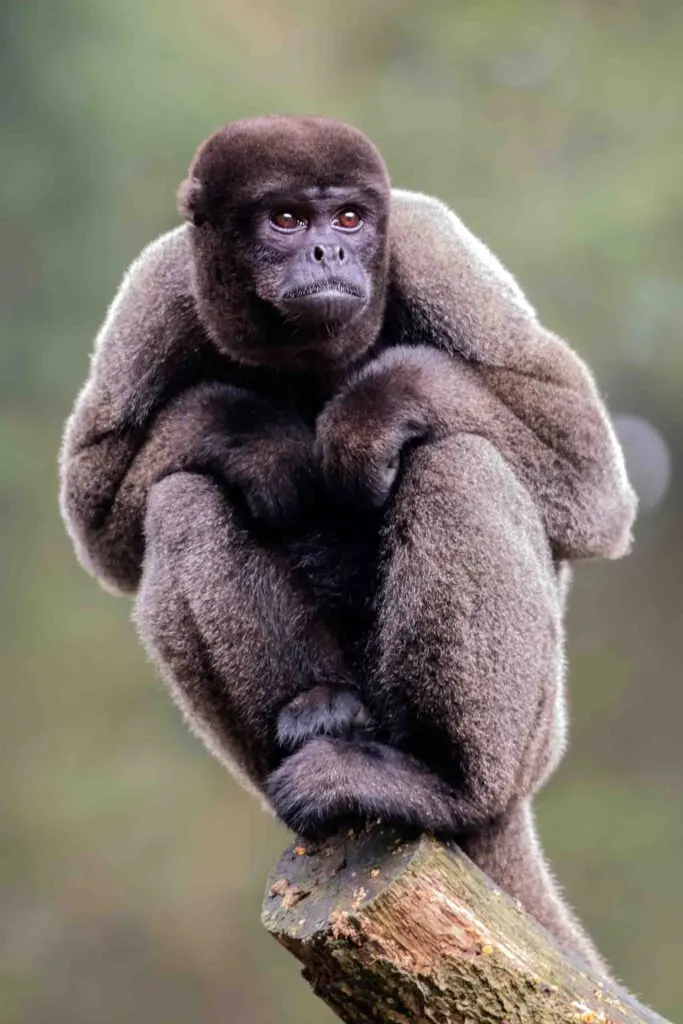
The brown woolly is one of those monkeys in the rainforest with a grey or black color contrary to its name.
Generally, this primate has a short soft thick fur, except on its face. It has a prehensile tail used to swing from branch to branch and long limbs, enable it to move quickly across the forest.
Males are usually larger when compared to females and typically live in groups of 2 to 70. The groups are further split down into two subgroups, mainly comprising of family members.
This Amazon monkey is arboreal, diurnal, and typically uses all four legs when walking, running, or climbing. Their diet is mainly made up of plants, insects, and small animals.
11. Mustached tamarin
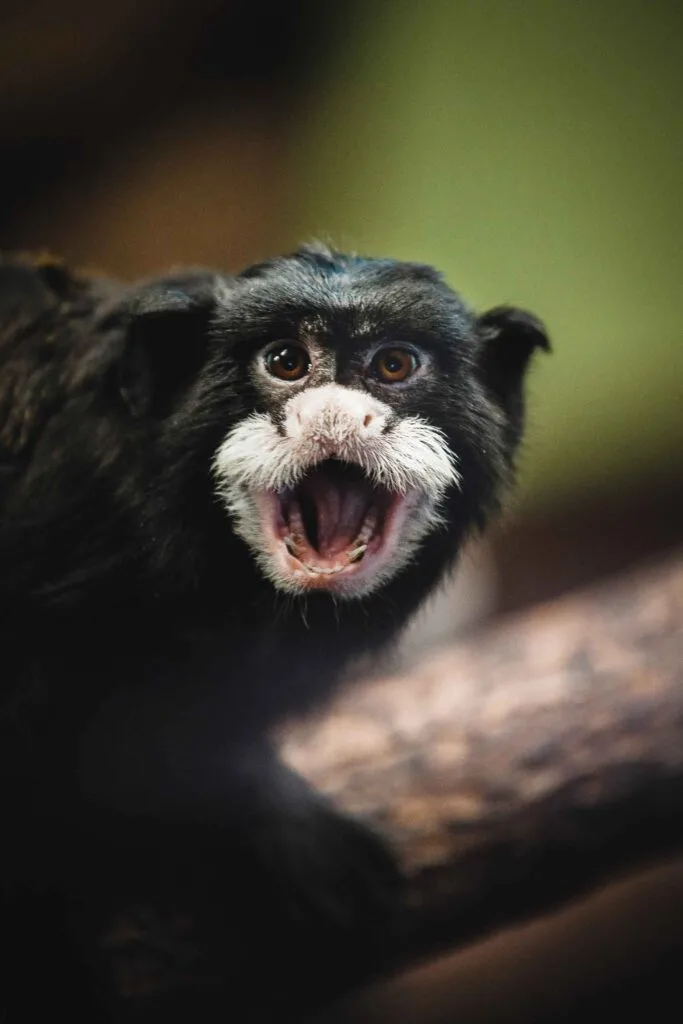
Mustached tamarin is one of those jungle monkeys with a black body, brownish back, a white nose, and mustache.
This species is among those monkeys in Brazil with claw-like nails on all its digits except on its big toes. This monkey breed is arboreal and diurnal, and quite territorial, especially when it comes to food in general.
This tamarin breed is exceptionally social and stays in groups of 3 to 12 with mixed species. The Mustached Tamarin is one of those Monkeys in the Amazon, omnivorous by nature.
It typically feeds on fruit pulp, nectar, exudates, small vertebrates, and also invertebrates.
Learn more about the Amazon Rainforest animals
To deepen your understanding of the wide range of animals in the Amazon Rainforest, you might want to browse my other articles where I talk about the snakes that live in this tropical forest.
But, if you want to learn more about other animals in Brazil, not only in the rainforest, you might want to check this guide I just linked above.
Did you like this post about the Amazon Rainforest monkeys? Then send it to a friend who would like it too!
